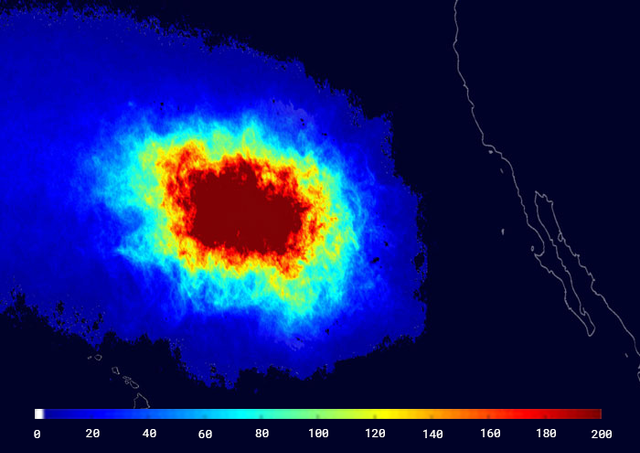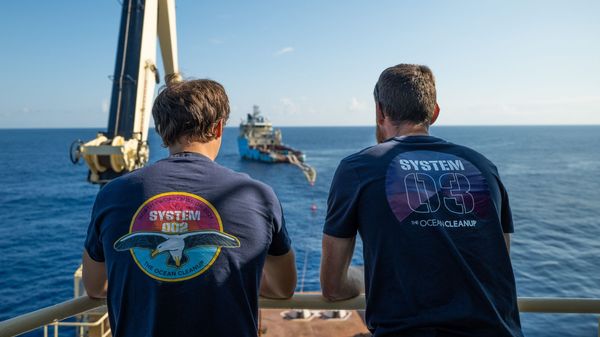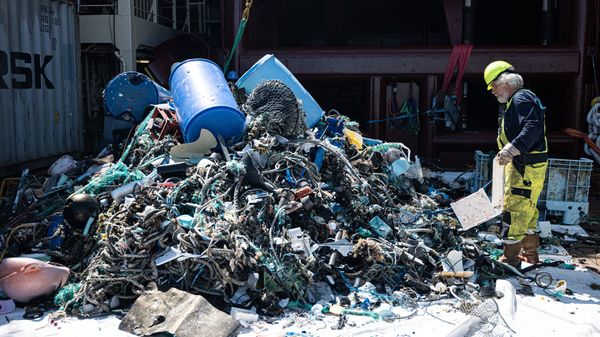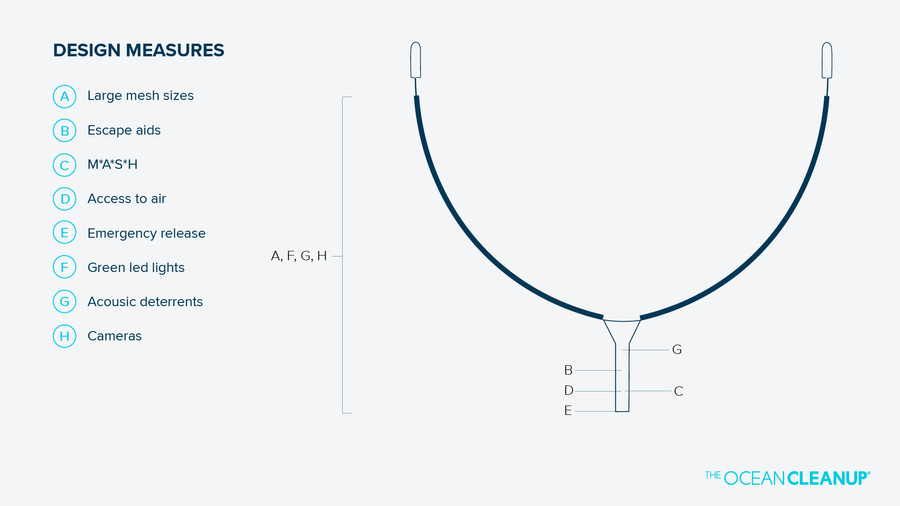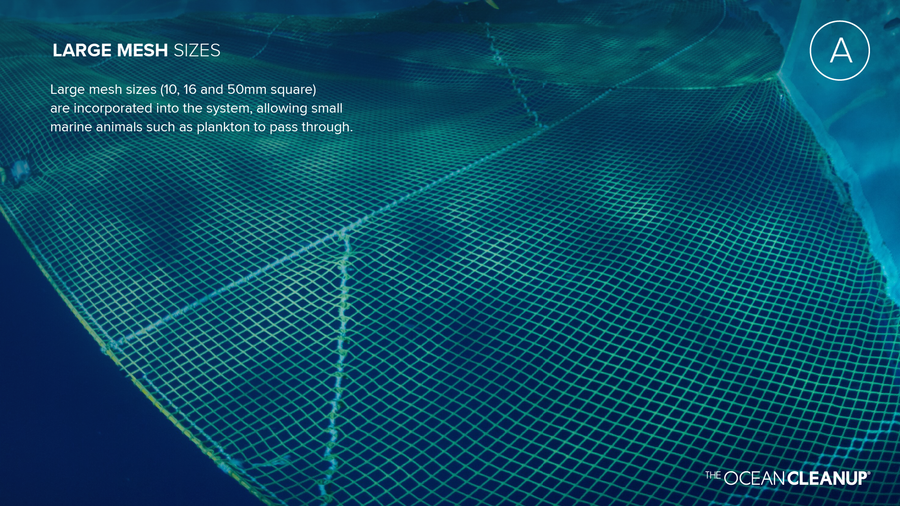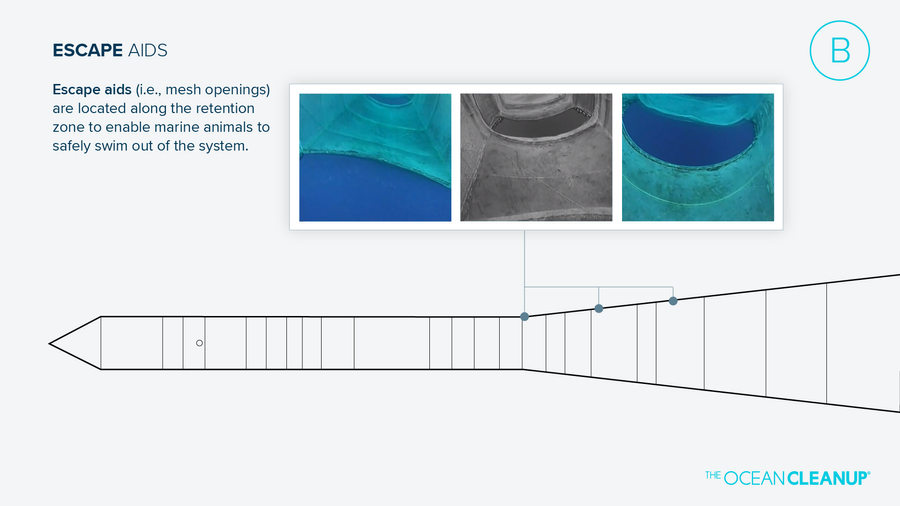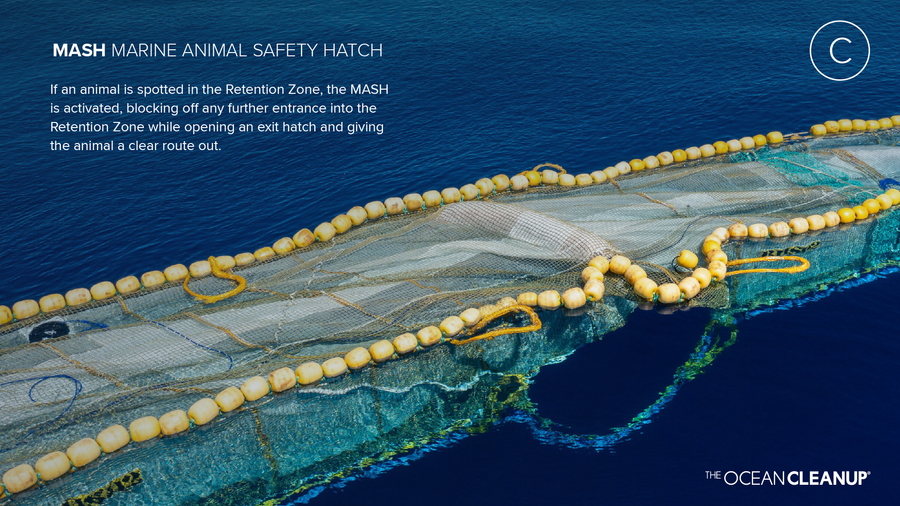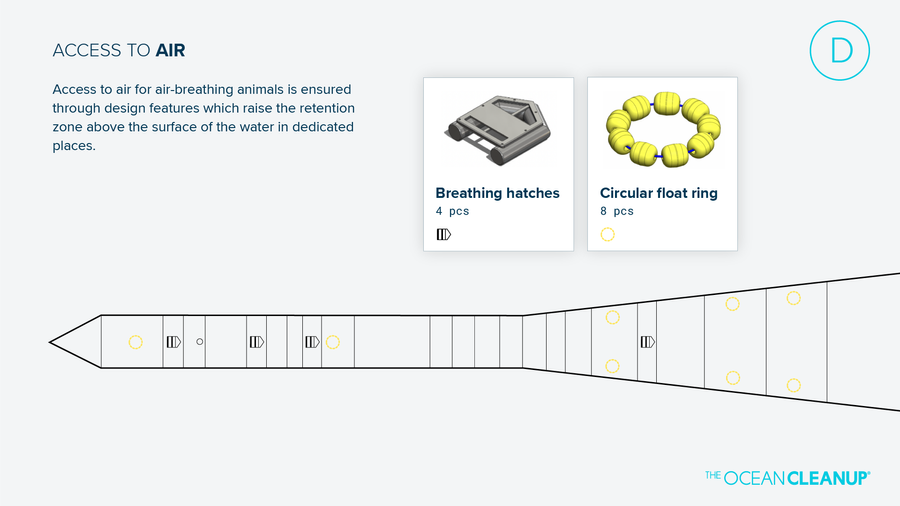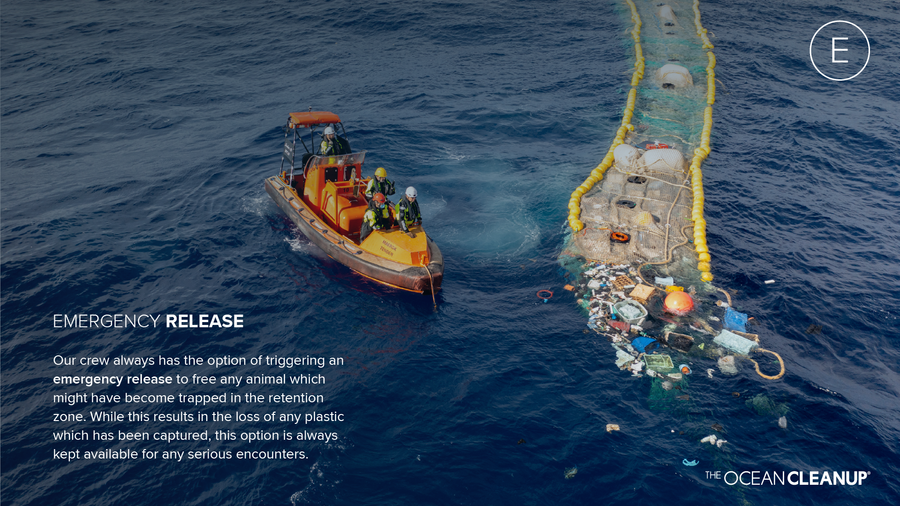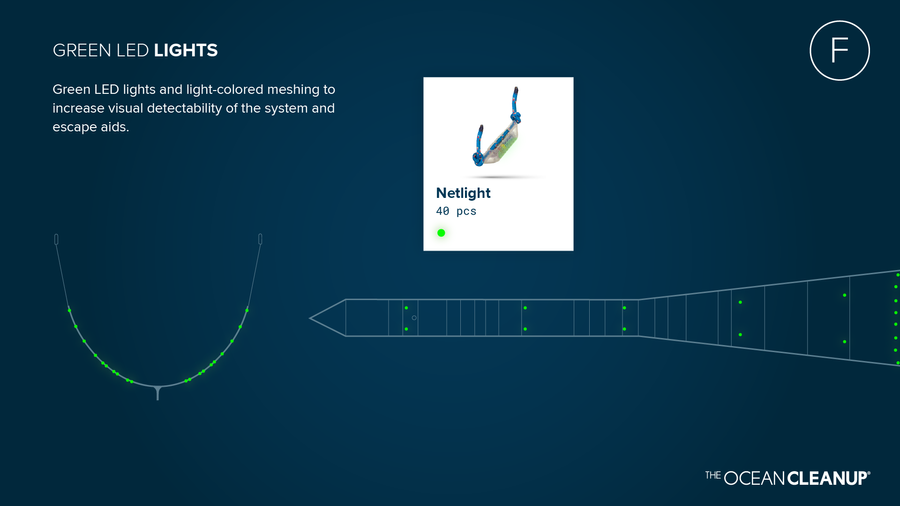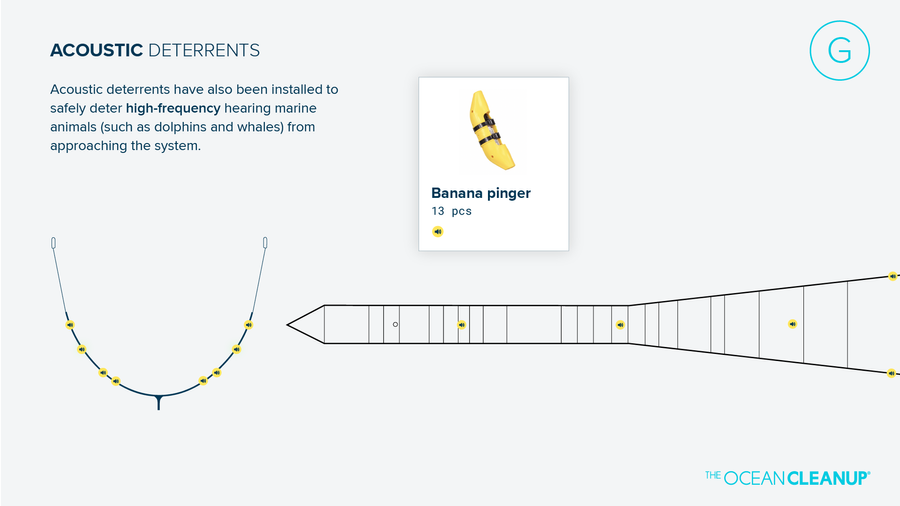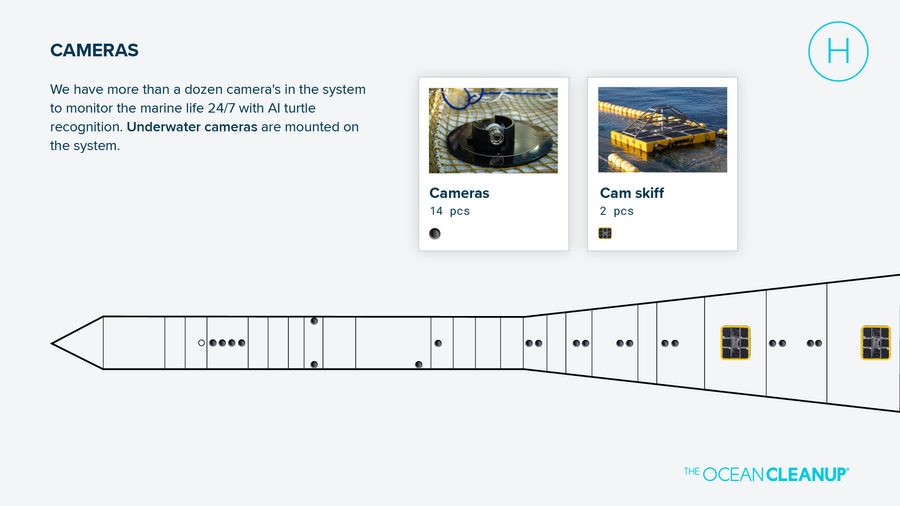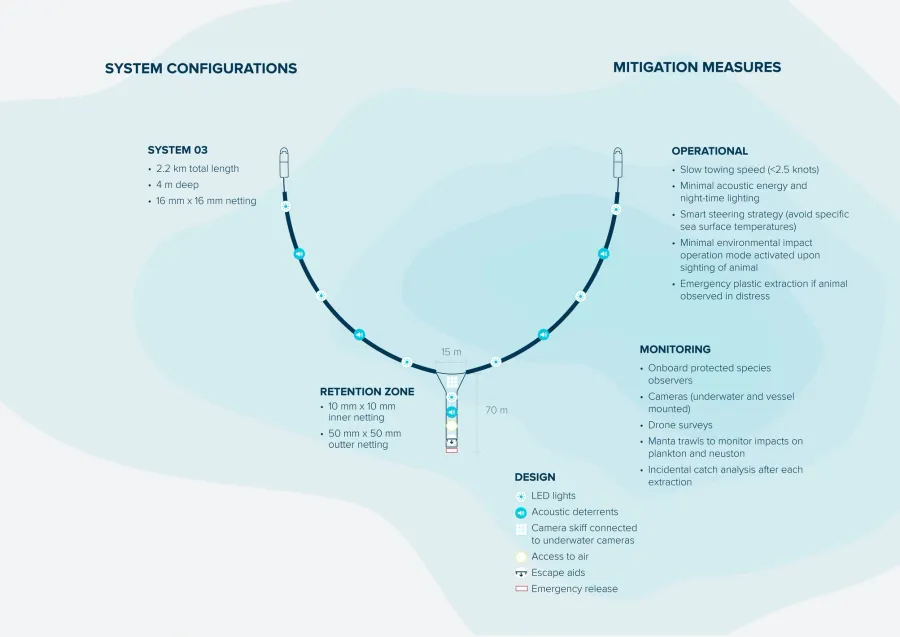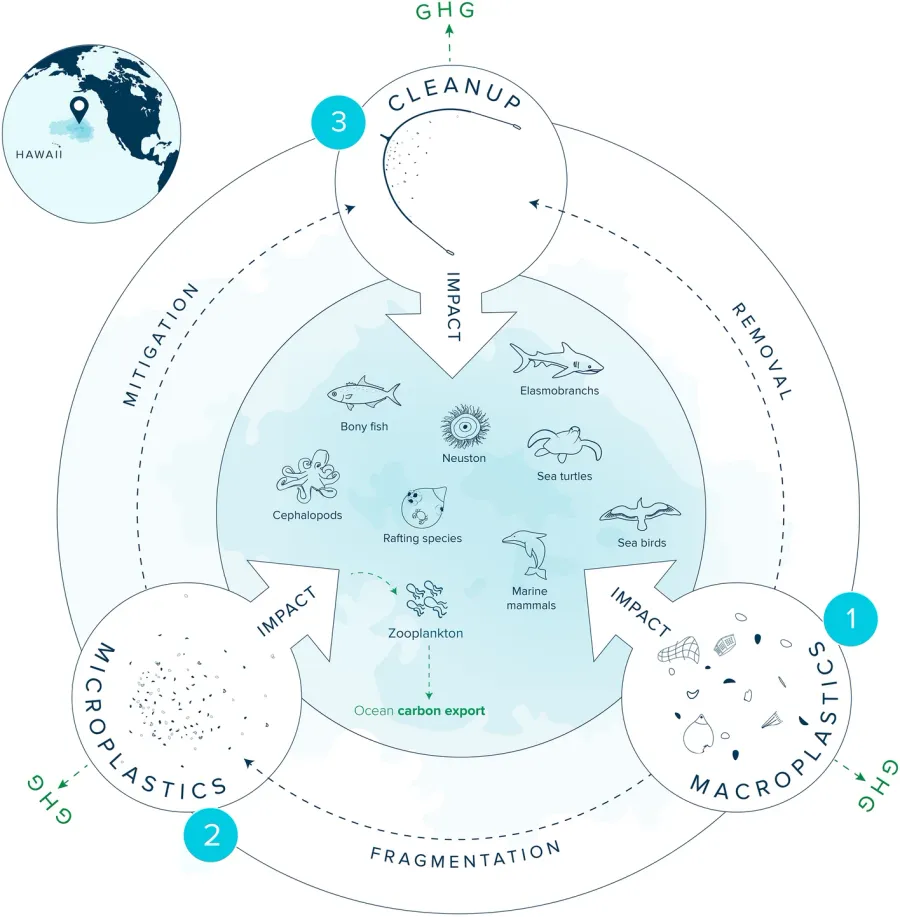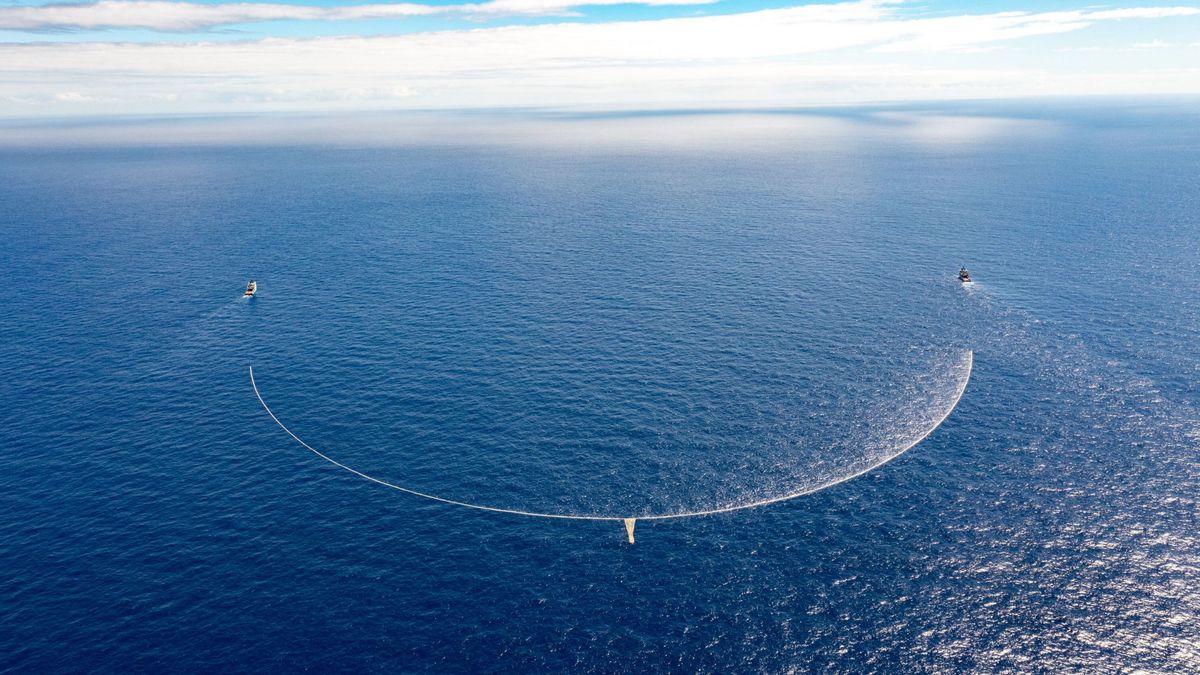
Cleaning up the garbage patches
Over 5 trillion pieces of plastic currently litter the ocean
Ocean plastic accumulates in five ocean garbage patches, the largest one being the Great Pacific Garbage Patch, located between Hawaii and California. To solve it, we not only need to stop more plastic from flowing into the ocean, but also clean up what is already out there. Floating plastics trapped in the patches will keep circulating until they break down into smaller and smaller pieces, becoming harder to clean up and increasingly easier to mistake for food by sealife. If left to circulate, the plastic will impact our ecosystems, health, and economies for decades or even centuries.
Cleaning the ocean garbage patches
The fundamental challenge of cleaning up the ocean garbage patches is that ocean plastic pollution is highly diluted, spanning millions of square kilometers. Therefore, we must target areas with high concentration of floating plastic where System 03 can make the largest impact.
Our cleanup solution is designed to first concentrate the plastic, allowing us to effectively collect and remove vast quantities. This is how it works:
How it works
Target
The circulating currents in the garbage patch move the plastic around, creating natural ever-shifting hotspots of higher concentration. With the help of computational modeling, we predict where these hotspots are and place the cleanup systems in these areas.
TIME FOR ACTION - PORT CALL EVENT
On September 6, we hosted an event to showcase the impact of our Ocean operation efforts and share our future plans. The event brought together our partners, individual supporters, global media and representatives from esteemed foundations.
WHAT WE ANNOUNCED
In 2018, we sailed out of San Francisco Bay with the mission to clean up the Great Pacific Garbage Patch (GPGP). Six years later, we returned to San Francisco with our latest cleanup system, System 03. Based on its performance, we can finally answer the question:
HOW MUCH DOES IT COST TO CLEAN UP THE GREAT PACIFIC GARBAGE PATCH?
Our modelers estimate that the GPGP can be cleaned within 10 years for a total cost of $7.5 billion. This is a relatively affordable investment, especially considering the significant impact this project will have on both humanity and the planet. To put these numbers in perspective, that is less than the US spends on Halloween decorations each year!
However, we estimate we can accelerate this process further. The GPGP is not an island of trash; it resembles a plastic soup, with areas of higher plastic concentration, namely “hotspots”.
By actively tracking where plastic hotspots form, we can direct our vessels to these areas more efficiently. This means collecting more plastic and cutting costs—all while reducing our emissions. With advanced hotspot hunting, we believe we can clean the entire patch in just 5 years and for half the cost.
So, we call upon the world to make the cleanup happen. We know how long it takes, and how much it costs.
THE ONLY THING STANDING BETWEEN THE WORLD AND CLEAN OCEANS IS MONEY
Expected impact
Our floating systems are designed to capture plastics ranging from small pieces, just millimeters in size, up to large debris, including massive, discarded fishing nets (ghost nets), which can be tens of meters wide.
Modeling predicts we need around 10 full-size systems to clean up the Great Pacific Garbage Patch.
After fleets of systems are deployed into every ocean gyre, combined with source reduction, The Ocean Cleanup projects to be able to remove 90% of floating ocean plastic by 2040.
-
Smart steering
Active steering and computer modeling enable us to target plastic hotspots -areas of higher concentration- to improve efficiency. Our models will be steadily improved using field data collected during our offshore missions, allowing for continually smarter operations and more focused cleanup.
-
Carbon offsetting
We aim to offset all carbon emissions related to our operations. We continuously work on technological and operational ways of minimizing emissions, while also conducting a full cost-benefit assessment to determine our net impact on the environment.
-
Scalable
By taking a careful step-by-step approach, the modular fleet of systems can be gradually scaled up while we learn from the field and improve the technology along the way. The more systems deployed, the faster the cleanup will be.
The system at sea
MANAGING ENVIRONMENTAL IMPACT
We aim to rid the oceans of plastic in the most responsible way possible. Our mission is intended to benefit the ocean and its inhabitants, so we place protection of the marine environment and mitigation of any negative impact of our operations at the forefront of our ocean cleaning operations.
System 03, our current ocean cleaning technology, has deterrents, cameras, escape aids, and other features to minimize risk to marine wildlife. We also have trained independent observers on board the vessels each trip to monitor any interactions with protected species (such as turtles or whales) in the area. Monitoring data has confirmed that our operations are having only minimal effects on the environment.
In the gallery below, you can learn more about how we keep marine wildlife safe during our cleaning operations. You can also read more about our environmental protection measures in greater detail in this update.
Net Environment Benefit Assessment
At The Ocean Cleanup as we developed System 03, we took steps to minimize its environmental impact. But we also needed to know whether this mission was worth it or not.
A Net Environmental Benefit Assessment was carried by our Environmental and Social Affairs team to assess the impact of System 03 at sea while conducting cleanup operations. The groundbreaking findings from this collaborative research showed that the benefits of cleaning the GPGP outweighed potential environmental costs, including greenhouse gas emissions and ecosystem disruptions.
In short, current available knowledge shows that The Ocean Cleanup’s efforts in the GPGP deliver an environmental net benefit. The dangers of floating plastic extend far beyond visible pollution—they contribute to the breakdown into microplastics, which not only contaminate marine ecosystems but also hinder the ocean’s ability to absorb and export carbon. In fact, microplastics in the GPGP are projected to reduce annual carbon sequestration by a staggering 15 to 30 million metric tons. In contrast, the carbon footprint of The Ocean Cleanup’s operations is significantly smaller, estimated at just 0.4 to 2.9 million metric tons per year. This means that the environmental gains from removing plastic outweigh the emissions generated in the process.
SURVIVING STORMS
As the cleanup systems must remain in the GPGP for long periods (sometimes under extremely harsh conditions), it is crucial that our systems can withstand ocean forces. We closely monitor the loads on the system, and we adapt the speed and span during rough seas. We track the latest weather forecasts to plan our route to avoid storms and to identify areas where cleaning conditions are most optimal. In the case of a particularly severe storm, the system can be temporarily withdrawn from operation.
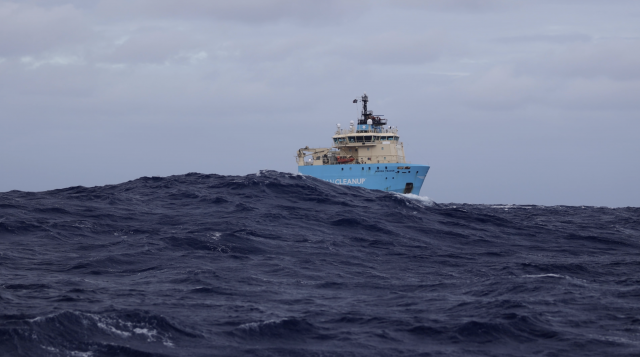
Join the cleanup
-
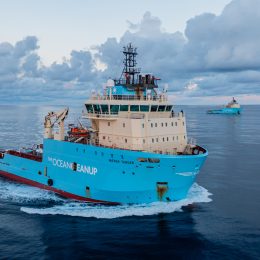
Help
CleanYour donation empowers us to continue our innovative cleanup efforts. Together, we can create a cleaner future for our oceans.
-
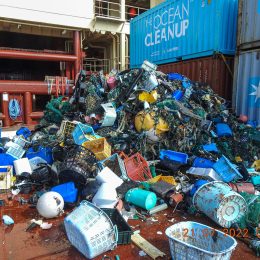
Partner
with usIf your company, organization, or foundation would like to be part of the scale-up, please reach out.
-
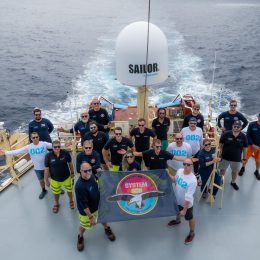
Join the
crewWe are always looking for new bright people to join the mission. Be part of a driven group of experts, who see the “impossible” as temporary.
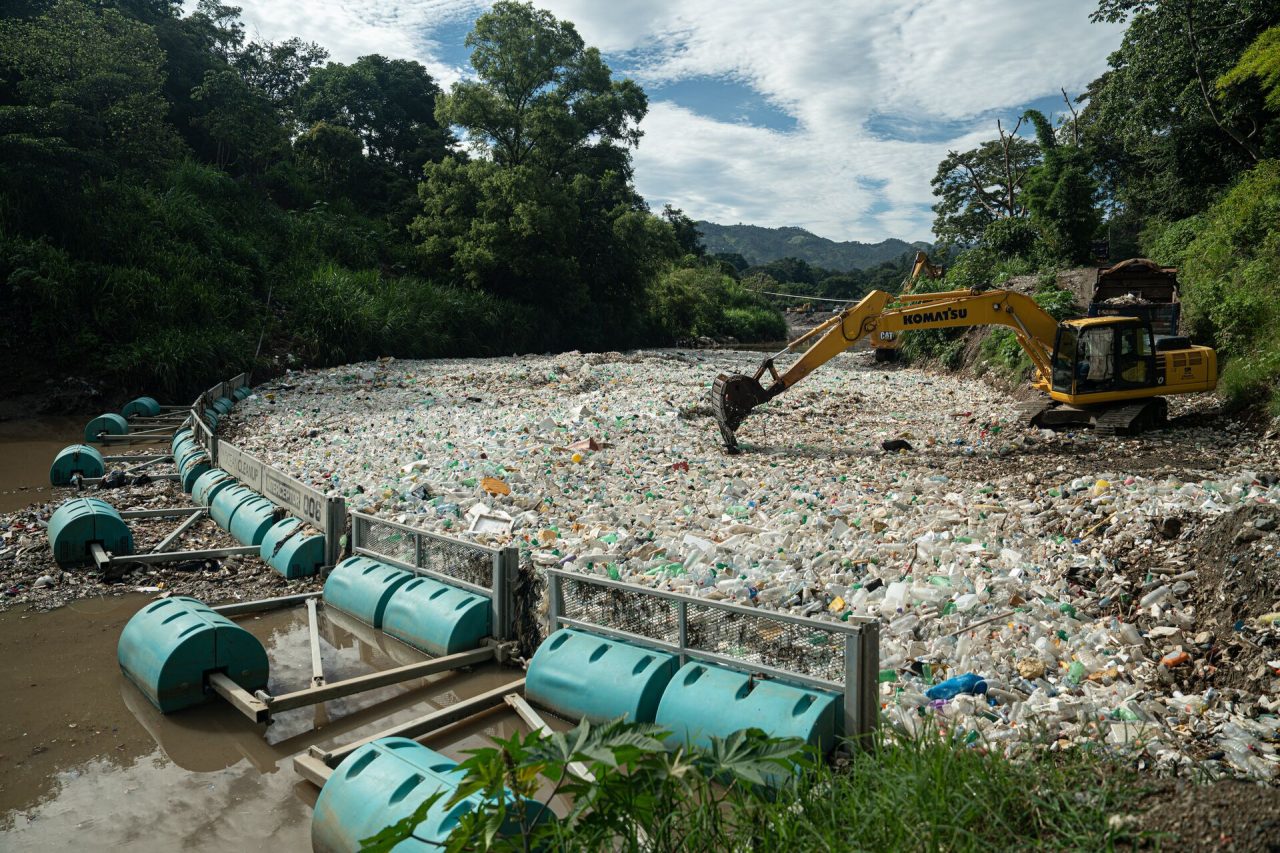
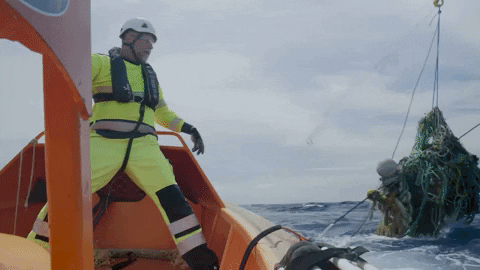
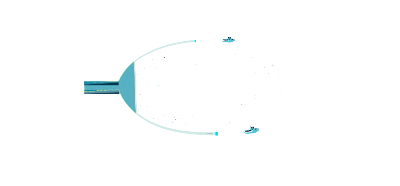
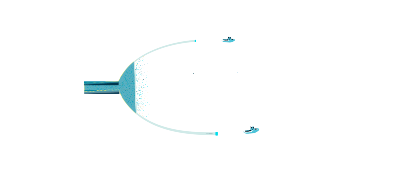
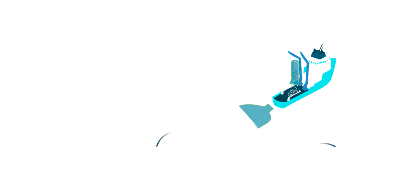
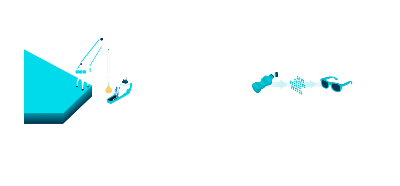
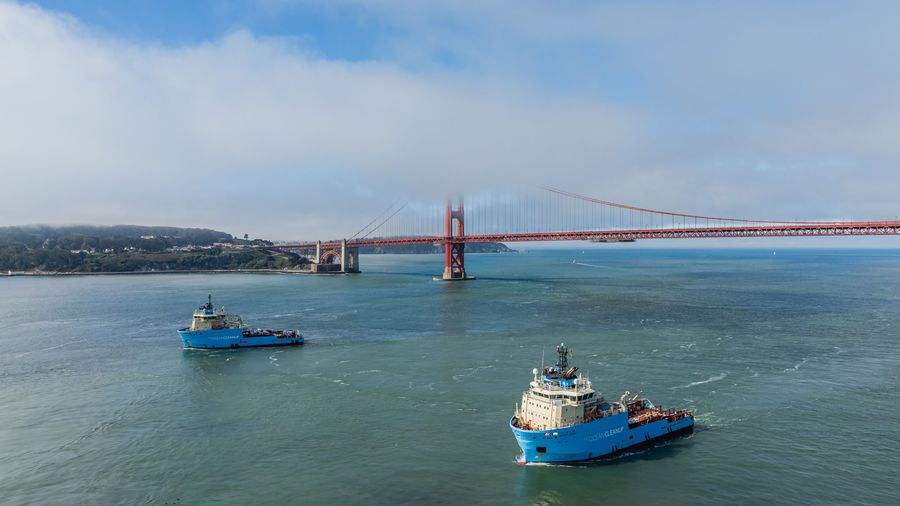
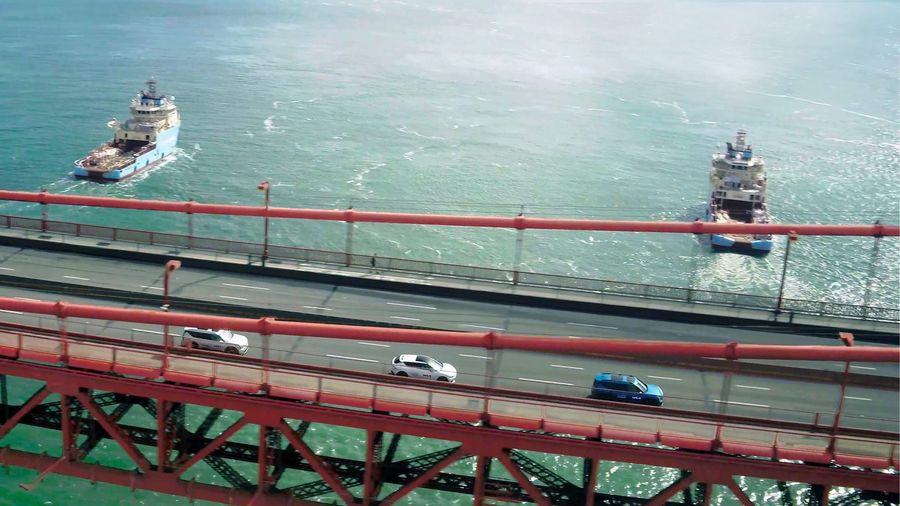
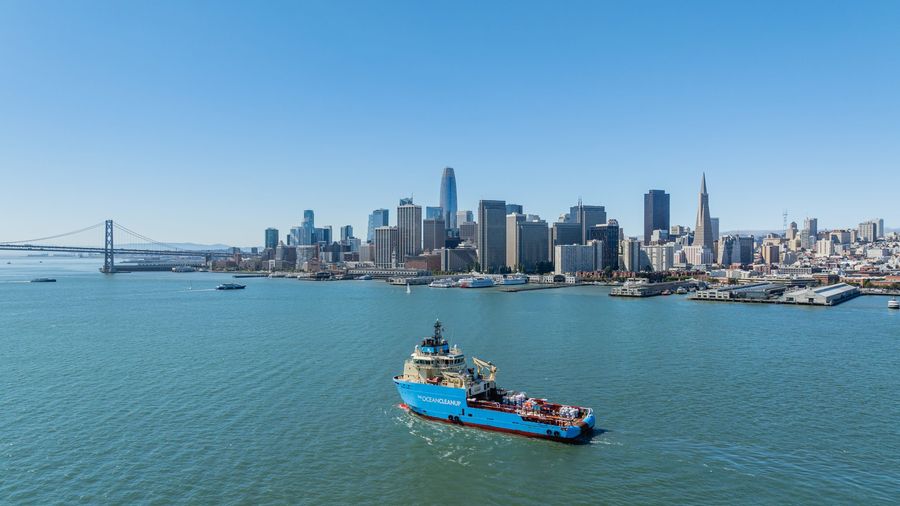
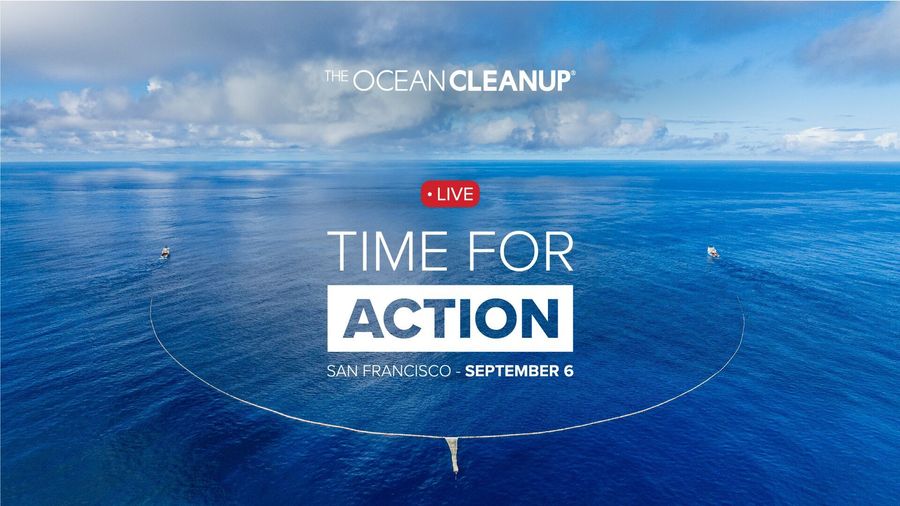
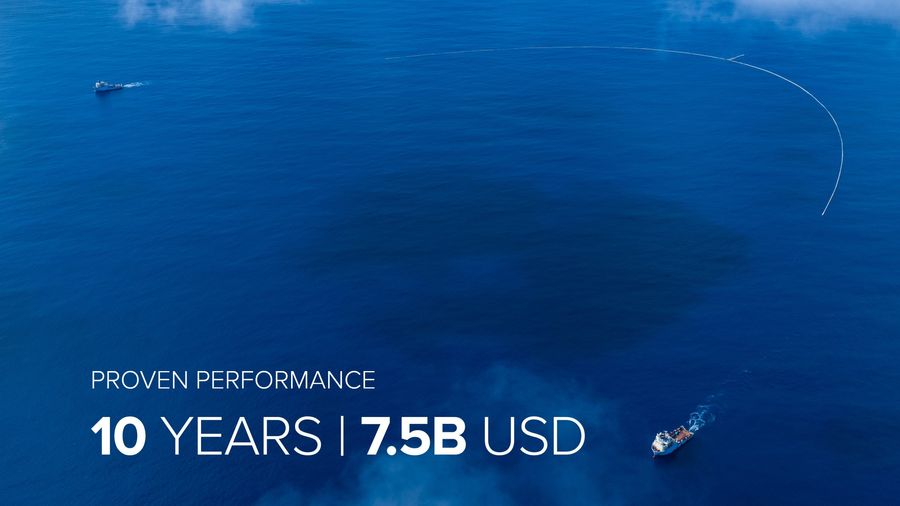
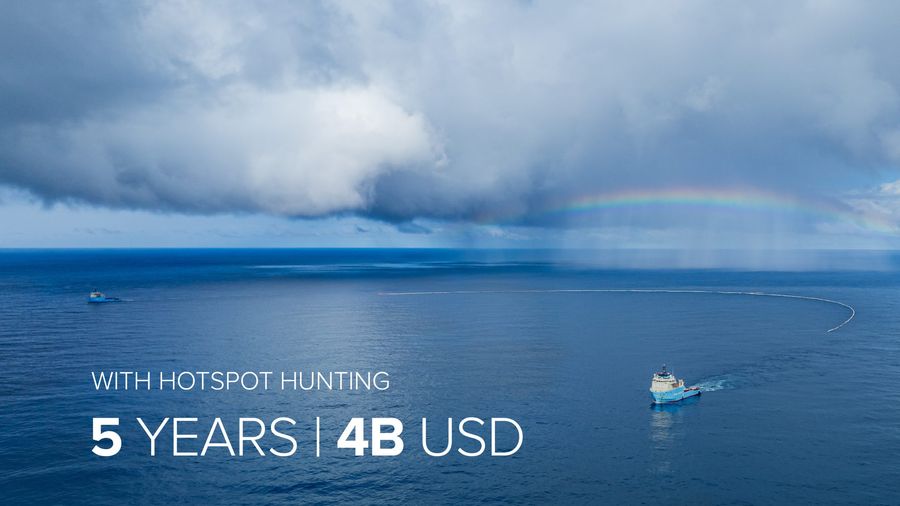
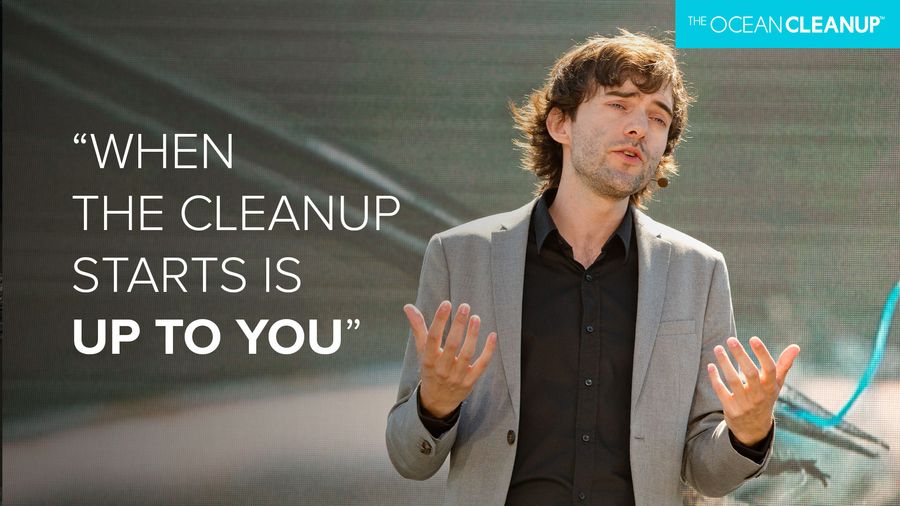
![Great Pacific Garbage Patch in 2030 with and without cleanup. [scale units : kg/km2]](https://assets.theoceancleanup.com/scaled/640x/app/uploads/2019/05/map_gpgp_with_cleanup_with_hscale_web.png)
